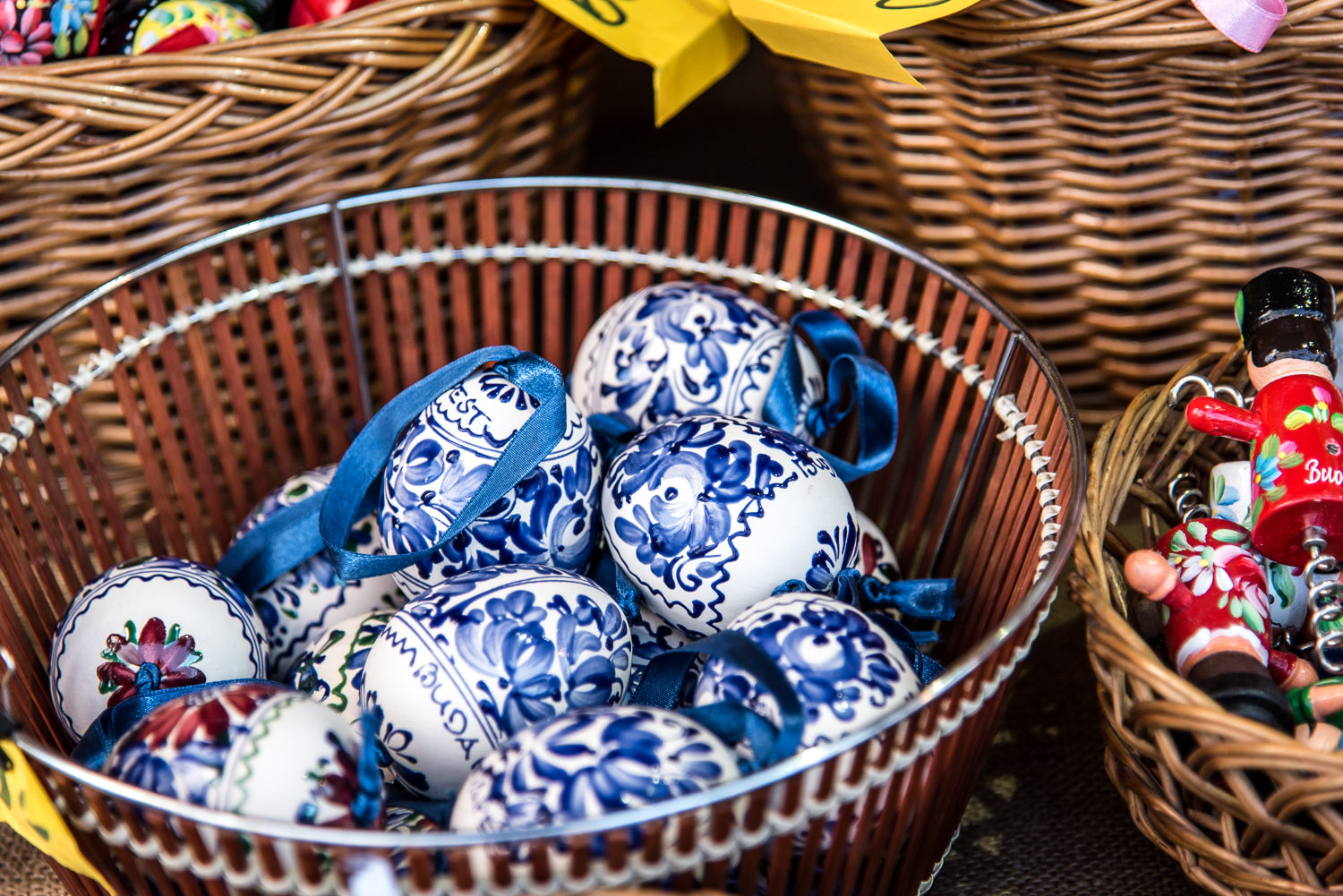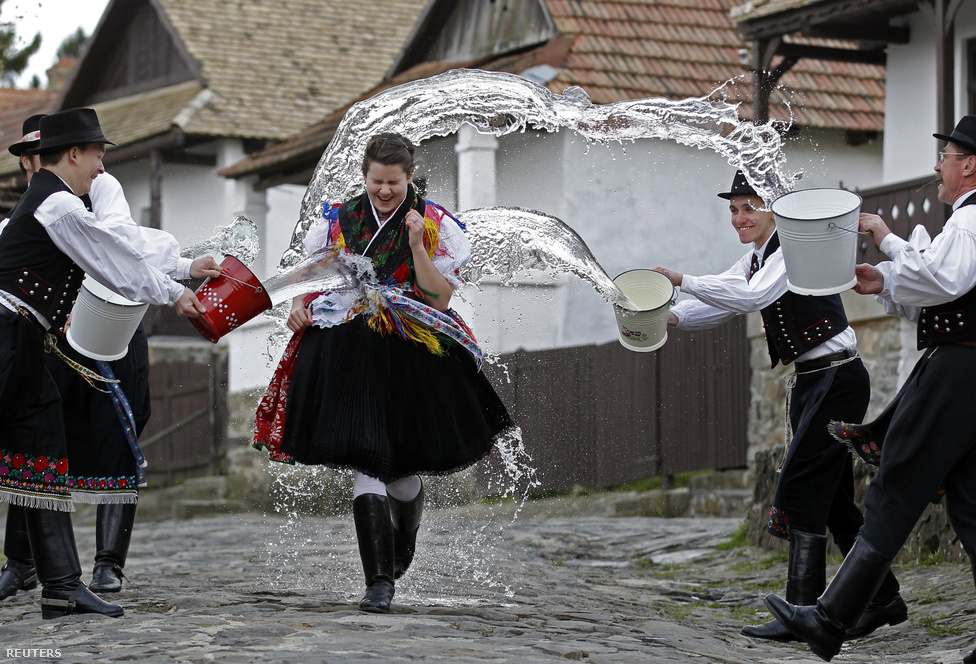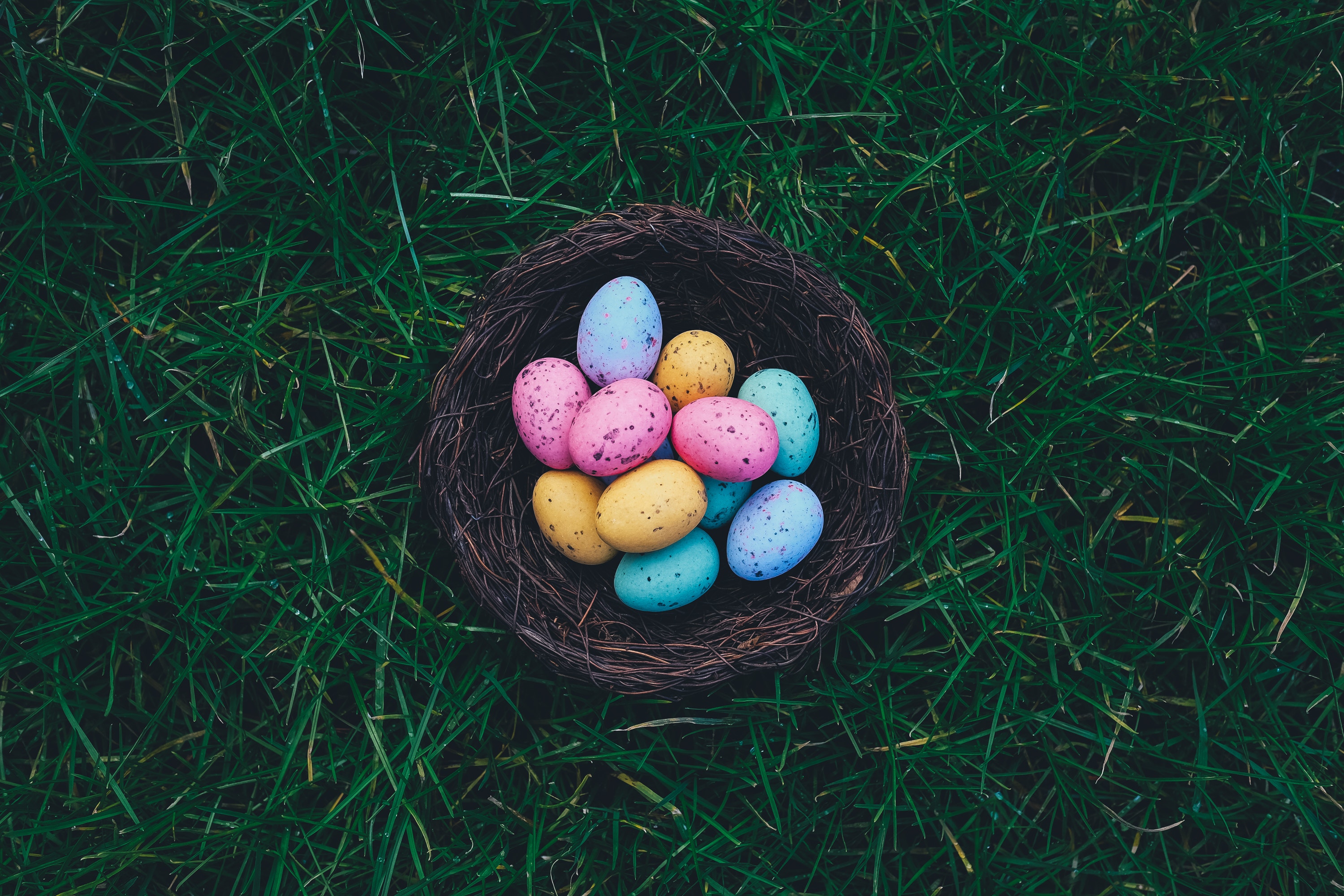One of the most popular Hungarian Easter traditions is locsolkodás, loosely translated at 'sprinkling the womenfolk', practised in town and countryside. On Easter Monday, boys are allowed to sprinkle girls with water or perfume – traditionally, a bucket of water is thrown on them! – and then the girls offer them painted eggs, homemade treats or a little shot of alcohol in return. If the latter, which often happens, then daytime drunkenness among the menfolk is a given. To earn their pálinka, men must also recite a locsoló verse, slightly humorous or innocently racy. The sprinkling of water, and the repayment with eggs, dates back to pre-Christian fertility symbols. It may seem like an unfair trade, but it’s all done tongue in cheek.
Egg-painting is a common Easter tradition around the world, and Hungary is no exception. Hungarian Easter eggs are decorated with simple geometric shapes or ornamental swirls, the likes of which can be seen in other forms of Hungarian artisan crafts.
Many supermarkets in Hungary sell egg-painting kits, including the necessary paints and dyes, brushes and design books to provide some inspiration. More advanced artists may also engrave pre-dyed eggs, or use wax and special dipping methods to produce stunning patterns. Sometimes the shells themselves are carved to create negative space alongside the paint, but this requires special tools.
Traditional Easter meals in Hungary involve ham, boiled eggs and braided loaves called kalács, pickled horseradish and lamb. This was a time when the long fast for Lent was being broken, so a rich meal was part of the celebration. For those following Christian examples, Good Friday is customarily a time to eat fish, saving the meat for Easter Sunday.
The eggs are often boiled in the cooking liquid left over from the ham, and served with a vinegar dressing. Accompaniments include radishes, onions and mustard, and dessert is usually a nut or poppy-seed cake.
Of course, the modern age has brought delicious chocolate eggs as part of the Easter menu, as well.
The Easter bunny is a modern addition to festive celebrations worldwide, one which children everywhere have embraced wholeheartedly for the delicious treats he leaves behind, and the thrill of the Easter Egg Hunt. In fact, the tradition of the Easter bunny originated in Germany, and it’s a relatively new introduction to Hungary.
Painted eggs, chocolates and other sweets are hidden around the garden for children to find on Easter Sunday morning. It’s not a widespread phenomenon, and not everyone has a garden, so each family does it a little differently.
This article was originally published in 2020.








